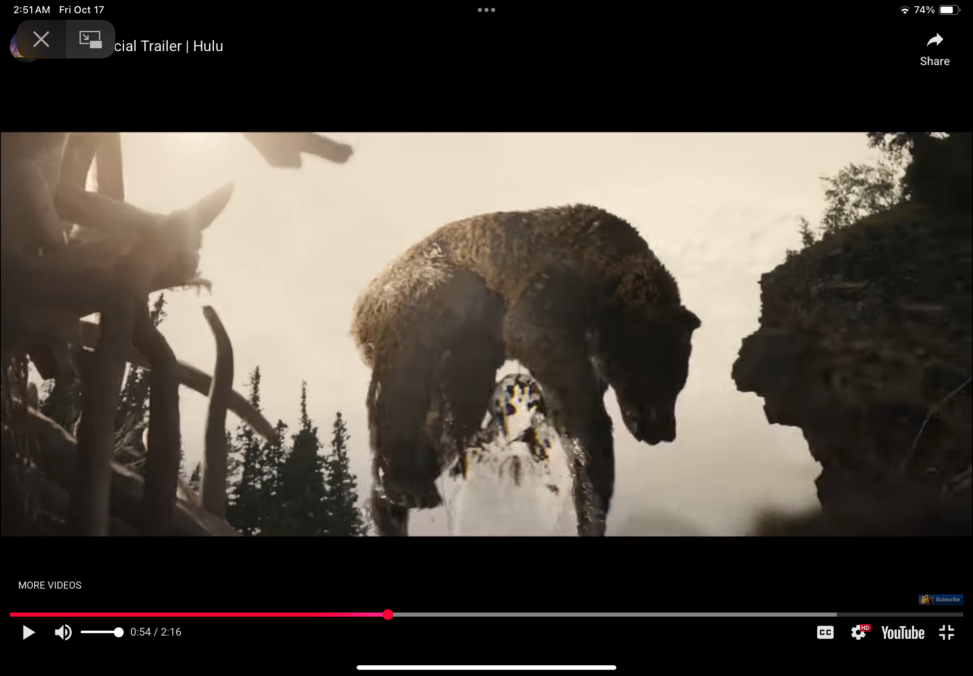Prey (2022) is a movie directed by Dan Trachtenberg, and it is about a young indigenous woman who confronts both colonial violence and an alien predator. This movie shows that hunting is not all about survival for the indigenous people, but also as a form of resistance against both natural and colonial oppression. Naru, a young Comanche woman, is striving towards showing her worth in a society that is dominated by men.
The alien predator relies on concealing its presence to hunt prey that it deems worthy rather than understanding the environment. It relies on its strength and technological superiority. The French fur trappers embody what real colonizers look and act like; their actions are exploitative, aggressive, and harmful to nature. Their excessive dependence on technology and violence mirrors the Predator’s contempt for peace, framing both as outsiders striving to dominate nature. At the same time, the Comanche warriors exhibit a type of relational masculinity rooted in reverence for the land and the community.
I think that Naru challenges the traditional action hero archetype. Why? Because other predator movies depict the protagonist as mostly a male with defined muscles and with good combat history, but Naru is different because she has none of these qualities. She understands and uses her environment to her advantage and is a quick thinker. This can be seen as she masters the tomahawk, making her own weapons, setting traps, and knowing traditional medicine, which shows that she embodies Indigenous knowledge systems rather than the Western system. I think this movie empowers its protagonist because it tells the story of the challenges she faced, of how she was disrespected by the male youths in her community, of getting caught and put in a cage by the French colonizers, of losing her brother to the alien predator, and of killing the alien predator. She carries and sees herself as a hunter, even though her community refuses to acknowledge that she is. Western movies are known for framing one protagonist as the person who saves everyone. That is what this movie has in common with Western movies.
Three notable shots in the film: First, (01:33:00–01:33:12) Following the defeat of the Predator, the camera gradually shifts upward from Naru’s feet to her face as she stands triumphantly. The image is stable, illuminated by morning light, contrasting with previous shadowy woodland visuals. The use of low-angle shots and extended takes visually enhances Naru’s victory, achieved not solely through brutality, but through wit and perseverance. This scene reverses the conventional “hardbody” action hero by focusing on Indigenous resilience and tactical strength rather than hypermasculine control. Second, (01:28:40–01:28:55) in this scene, the camera tracks Naru while she conceals herself in the mud pit, while she is breathing heavily. The scene employs a gradual tracking motion and close-up framing to highlight her fear and resolve. The dense atmosphere and low lighting amplify the suspense, serving as a visual metaphor for her strategic use of nature instead of depending on sheer power. Third, (00:59:50–01:00:05) In this scene, the camera swiftly alternates between medium and wide shots showing the Predator assaulting the French fur trappers. The employment of handheld camera techniques and rapid editing generates disorder, showing what colonial oppression looks like.

Provide Feedback